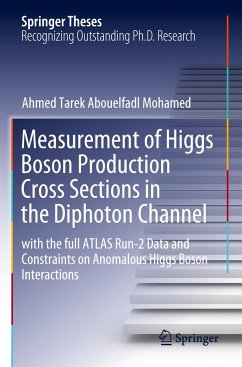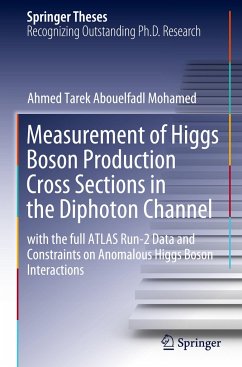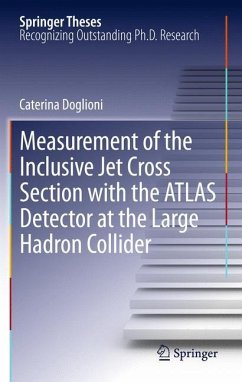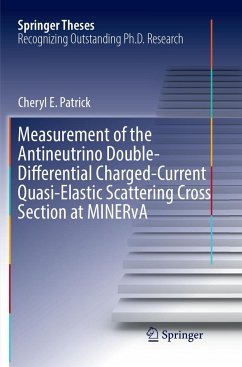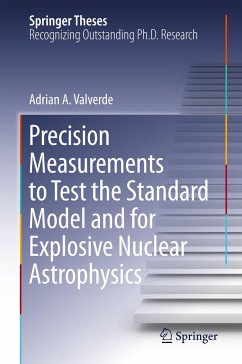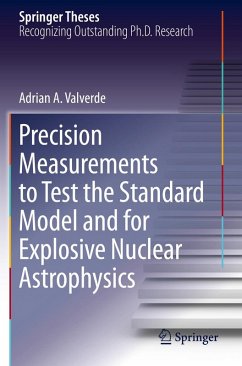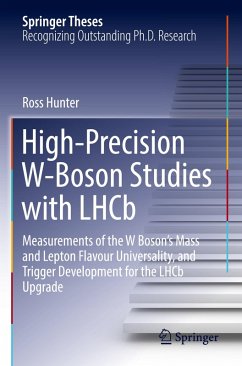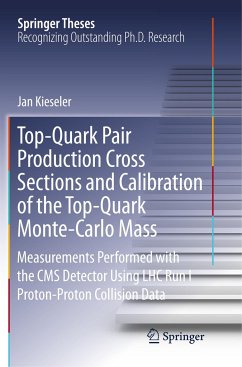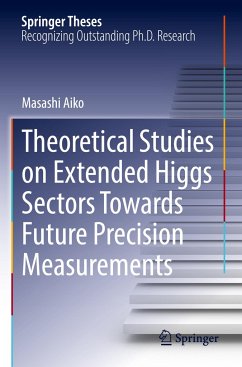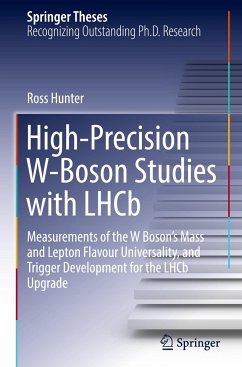
Precision Measurement of the + - pi pi pi Cross Section Using Initial-State Radiation
Versandkostenfrei!
Erscheint vorauss. März 2026
106,99 €
inkl. MwSt.

PAYBACK Punkte
53 °P sammeln!
This book presents a high-precision measurement of the cross section for electron-positron annihilation into three pions ( ) using the initial-state radiation (ISR) method with Belle II data, offering key input for the hadronic vacuum polarization contribution to the muon. It addresses longstanding tensions in hadronic cross-section data and contributes to the refinement of the Standard Model prediction of one of its most sensitive observables. The anomalous magnetic moment of the muon is one of the most precisely measured quantities in particle physics and offers a powerful probe of potential...
This book presents a high-precision measurement of the cross section for electron-positron annihilation into three pions ( ) using the initial-state radiation (ISR) method with Belle II data, offering key input for the hadronic vacuum polarization contribution to the muon. It addresses longstanding tensions in hadronic cross-section data and contributes to the refinement of the Standard Model prediction of one of its most sensitive observables. The anomalous magnetic moment of the muon is one of the most precisely measured quantities in particle physics and offers a powerful probe of potential physics beyond the Standard Model. One of the leading uncertainties in theoretical predictions arises from hadronic contributions, particularly the hadronic vacuum polarization (HVP) term, which relies on experimental input from cross sections for electron-positron annihilation into hadrons. Among these, the final state is the second-largest contributor after , yet previous measurements suffered from limited statistics or systematic uncertainties. This book presents a comprehensive analysis based on 190 fb ¹ of Belle II data collected at or near the (4S) resonance, applying the radiative return method to scan a hadronic mass range from 0.6 to 3.5 GeV. It features event selection, background suppression, efficiency evaluation, and an unfolding procedure to extract the cross section with high accuracy. The analysis includes an updated estimation of the three-pion contribution to the muon s anomalous magnetic moment. In addition to its physics implications, the book demonstrates modern data analysis techniques in collider experiments, including detailed detector modeling, ISR event reconstruction, and systematic uncertainty evaluation. It provides a blueprint and serves as a benchmark for future analyses of hadronic cross sections at the Belle II experiment.



